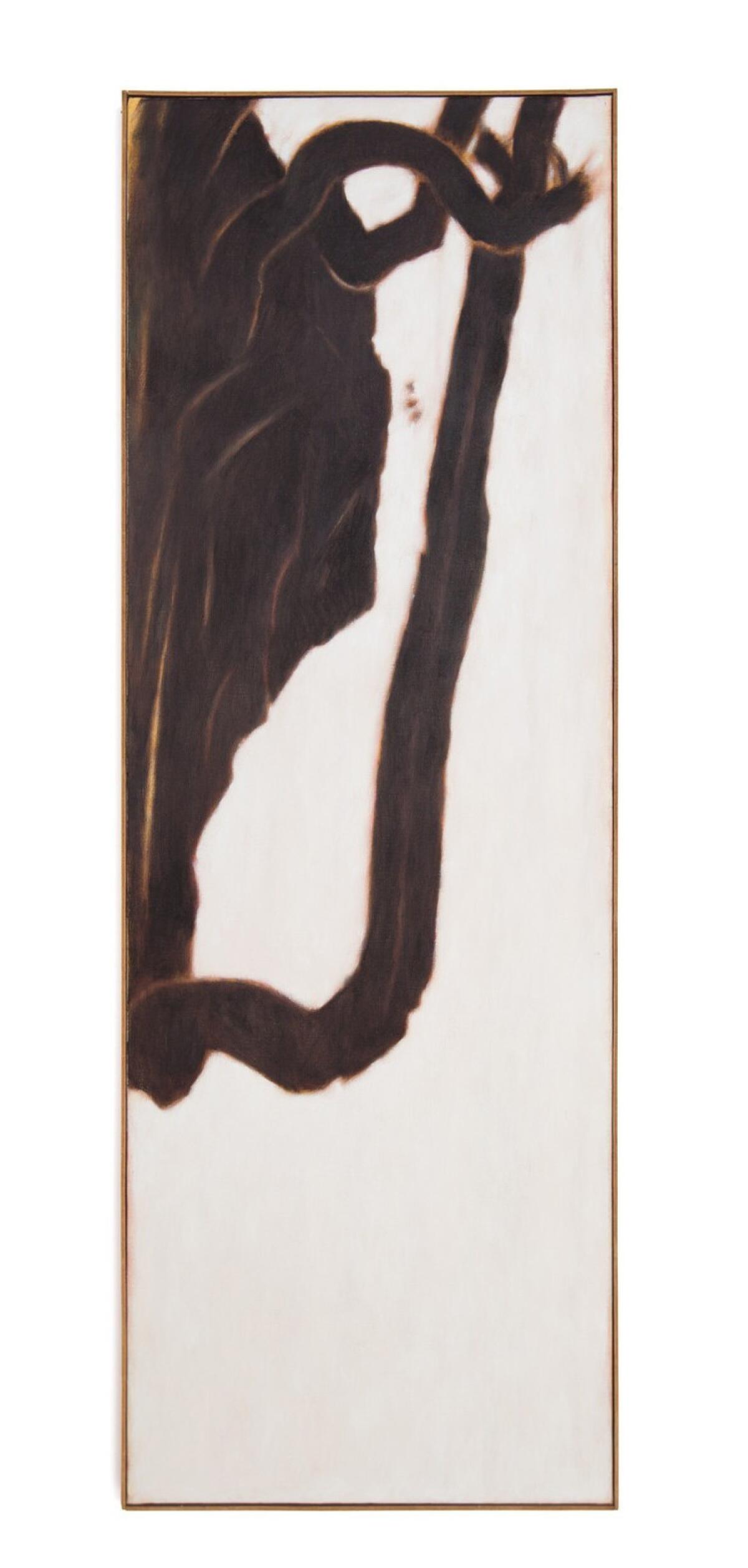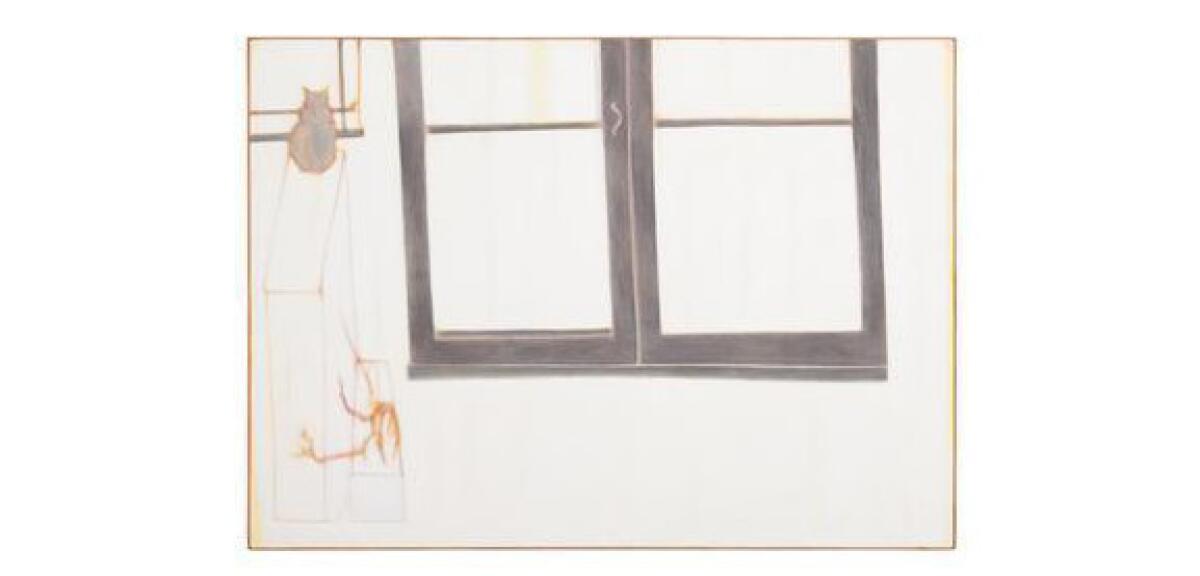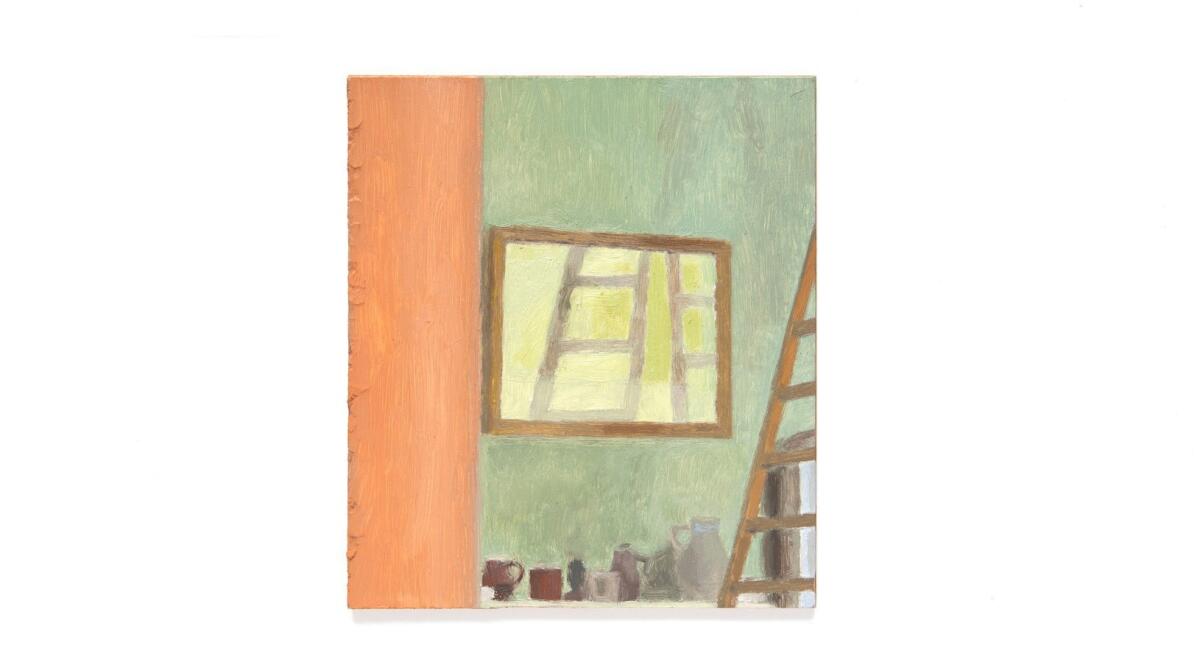Review: Painters Fred Reichman and Eleanor Ray, attuned to the humble beauty of the everyday
- Share via
Fred Reichman was a lover of haiku, and his quietly radiant paintings share much with that poetic form. Spare and reductive, they draw upon observations of the everyday, within the home and natural landscape. They are acts of reverence for precise moments in time, confluences of light, color, awareness.
Reichman (1925-2005) studied at UC Berkeley and the San Francisco Art Institute and taught at both. He was a well-regarded figure in the Bay area, and he exhibited in galleries and museums from Taos, N.M., to Tokyo. He had only a smattering of shows in Southern California, however, and the last was 20 years ago. The Landing's current presentation of 19 paintings comes as an exhilarating discovery.

The works span from 1959 to 1993, most dating from the '60s and '70s. Each is a marvel of elegant understatement and compositional verve. Reichman generated tremendous visual energy through asymmetry and fragmentation, truncating forms and flattening space — visual strategies common to the Japanese prints he admired and also a prevalent snapshot aesthetic.
"By the Waterfall" (1974) is a stellar example. The tall vertical canvas (72 by 25 inches) pays homage to a calligraphic snippet of nature, a woody extrusion of looping branches jutting in from the upper left against a field of warm white that could signify air or the waterfall's pale froth.
Reichman often filled his surfaces with broad planes of solid but aerated color (frequently a shade of white or yellow), then situated his ostensible subjects toward the edges or in the corners, so the viewer's eye is pulled off-center, urged along a path studded with surprise. A kind of humor burbles within this obliqueness, a delight in visual play and possibility.
In "At the Back," a stunning work from 1962, hushed stillness dominates the bottom third of the canvas. Toward the top left corner sits a cat, its gray silhouette in a nimbus of golden afternoon light. Double screen doors drop down into the center of the scene at a very slight diagonal, dividing the space but without the sterility of crisp geometry. Stillness in Reichman's world does not mean stasis.

The Landing's mini-survey makes clear how Reichman savored small domestic pleasures — his wife asleep on the couch, gloves laid upon a scarf in a position of tender embrace, ringed puddles of water left by drying dishes. He accentuated the gentleness of such scenes by giving his forms slightly soft, diffuse boundaries. Matisse comes to mind, as does Milton Avery. Reichman's paintings breathe, and encourage us to do so, to fully avail ourselves of the thrill of everyday life.

The Landing has paired Reichman's show with a selection of recent paintings by Eleanor Ray, a young Brooklyn artist making her California debut. Ray works on a scale of privacy, intimacy. Her panels generally are no larger than oversize postcards, each describing the interior or exterior of an artist's studio. She organizes the space of each scene to emphasize harmony and order. Most views are frontal, clean and clear, though "Studio Corner (Cezanne)," an unusual gem, is enlivened by reflection, diagonals, and incompleteness.
Ray's regard for the accoutrements and atmosphere of these gestational chambers borders on the sacred. Her work, like Reichman's, is deeply thoughtful, attentive to the beauty of the quotidian and humble, and paced to the slow reveal.
------------
The Landing, 5118 W. Jefferson Blvd., Los Angeles. Through July 16. Closed Sundays through Tuesdays. (323) 272-3194, www.thelandinggallery.com
ALSO
Chuck Kelton's lush landscapes, crafted in the darkroom
A grassroots, handmade Venice Architecture Biennale from Alejandro Aravena
Energy and emotion in Rachelle Sawatsky's strong show at China Art Objects
Follow The Times’ arts team @culturemonster.
The biggest entertainment stories
Get our big stories about Hollywood, film, television, music, arts, culture and more right in your inbox as soon as they publish.
You may occasionally receive promotional content from the Los Angeles Times.







